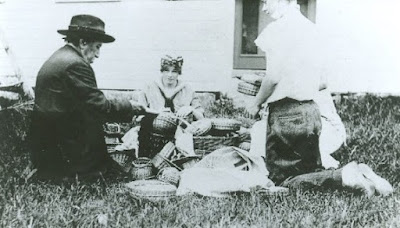185 years ago today, Thomas Cole and Asher B. Durand sketched in Crawford Notch. Cole's sketch was later used as the basis for one of his most famous paintings. For a discussion of the misidentification of that view see our previous blog here.
The Cole sketch is now in the collection of the Princeton University Art Museum. FMI see this link here.
The Durand sketch is now in the collection of the New York Historical Society. FMI see this link here.
The sketches are very similar and were taken from around the same vantage point.
You can visit that site today. For directions and information see these links here and here.
FMI contact the Conway Public Library's Henney History Room
The center of each sketch features the "gate" through which the road runs, Elephant Head on the left and the Notch House and barn from that time period.
For more images in this area follow this link.
FMI contact the Conway Public Library's Henney History Room


















